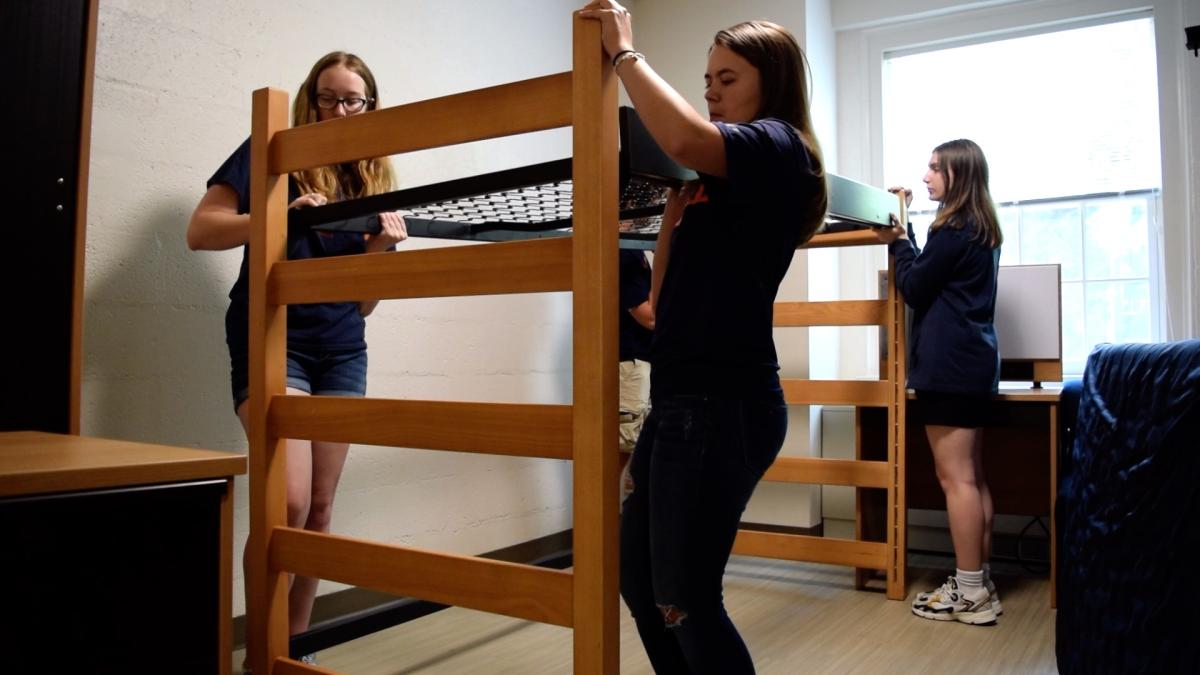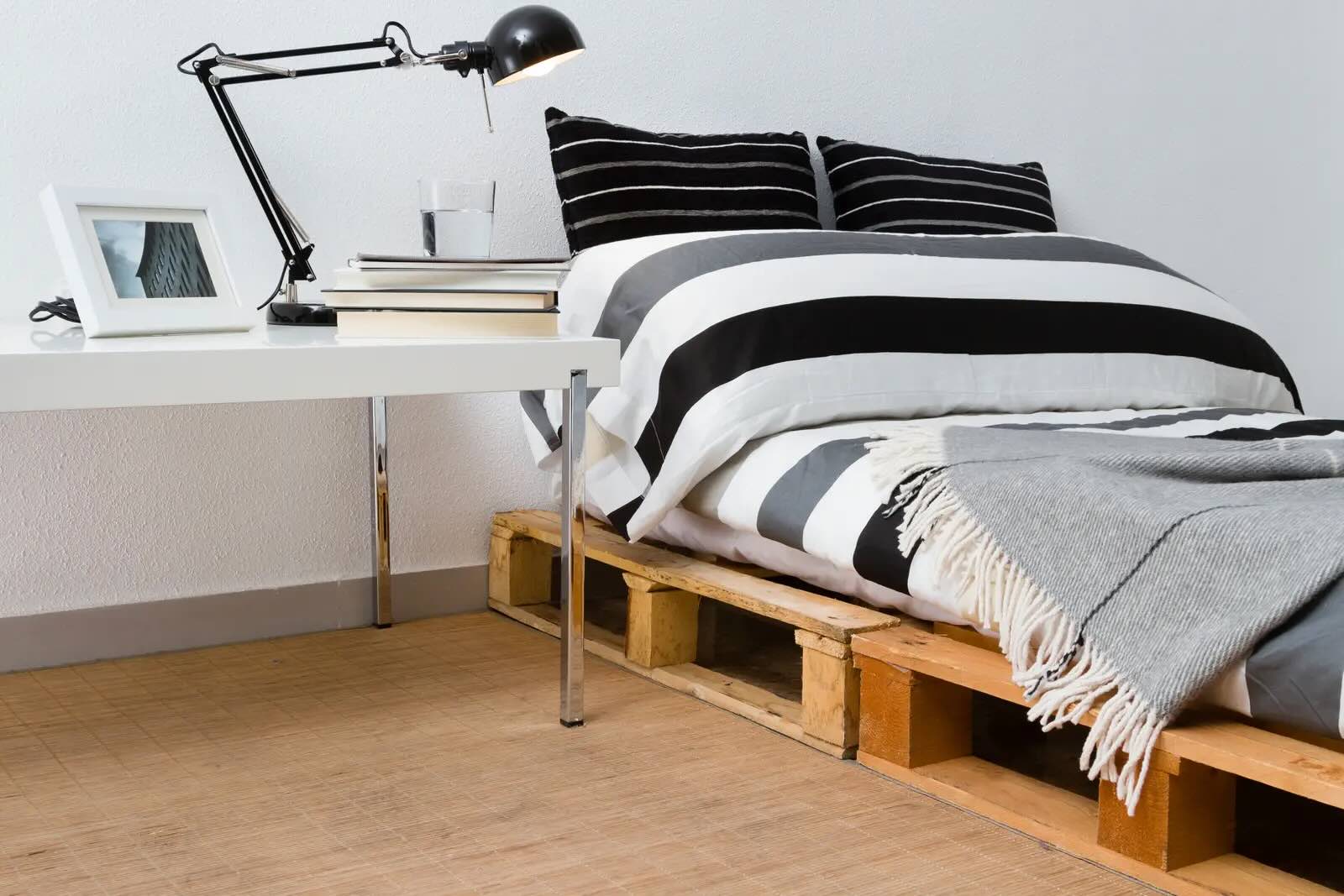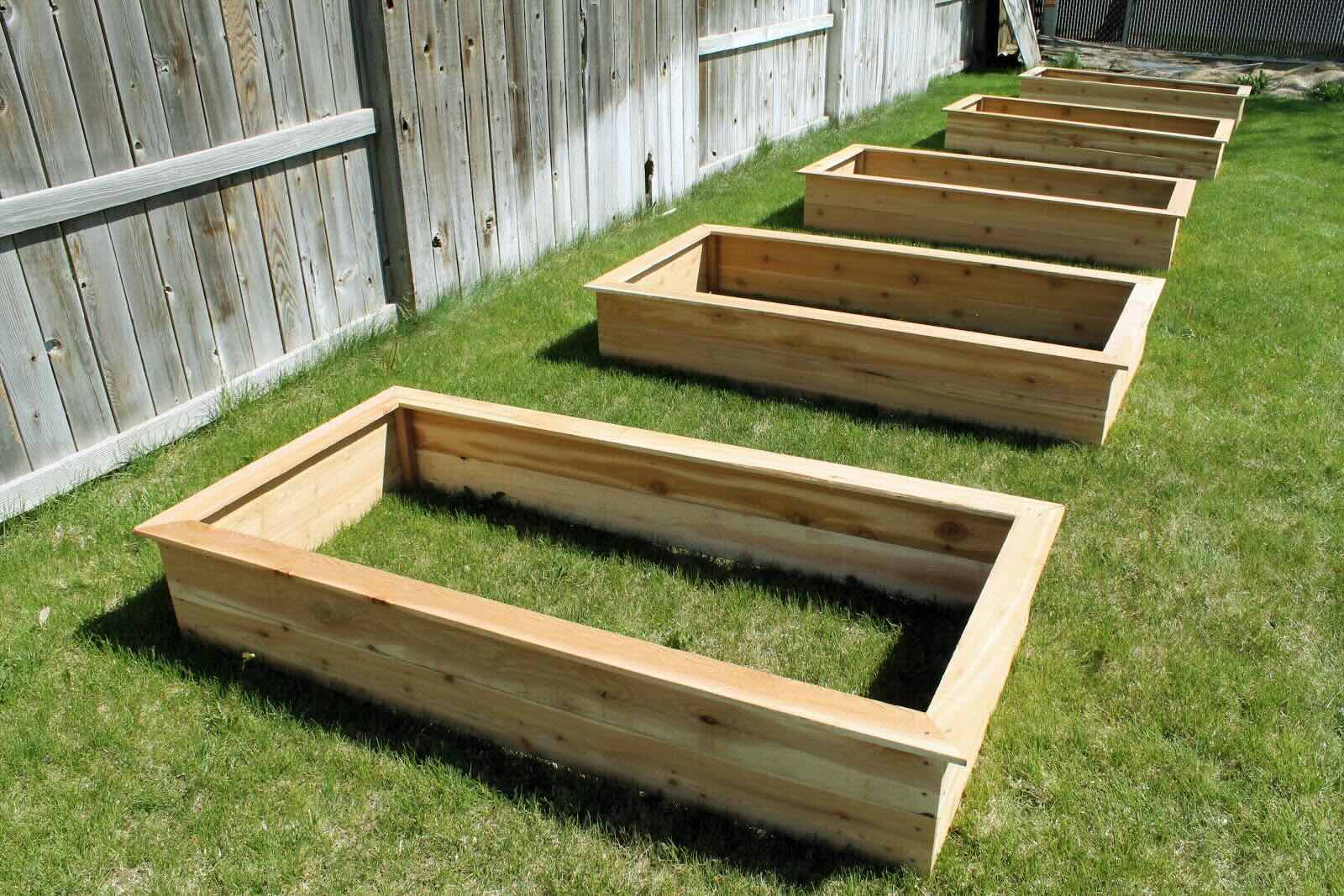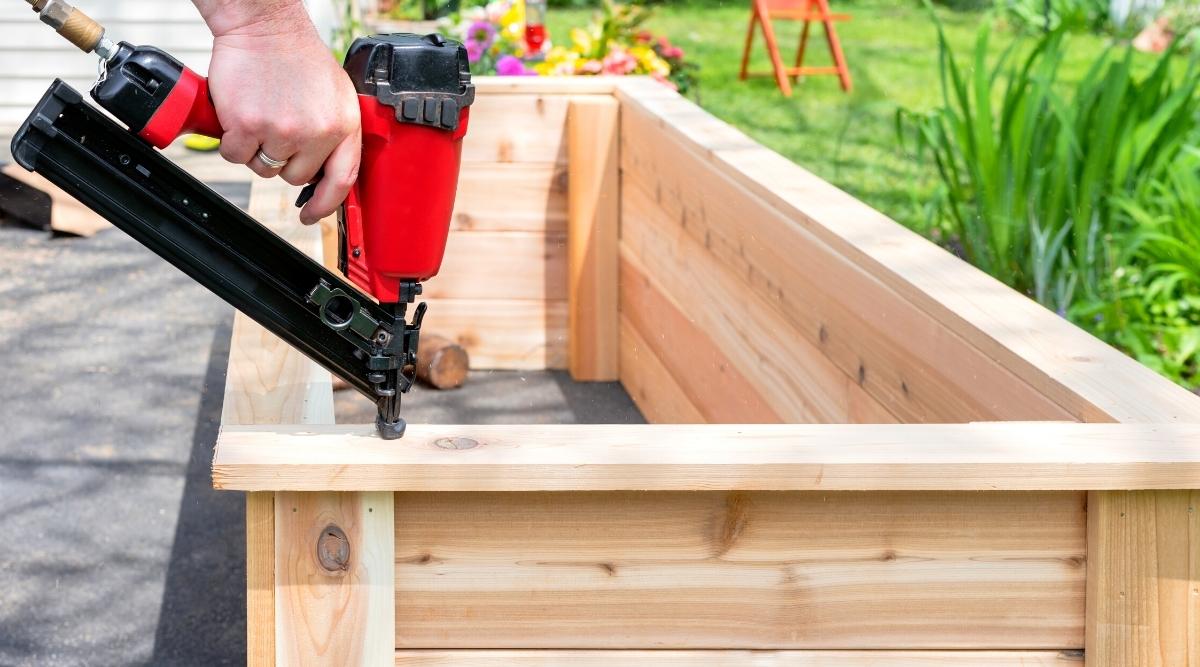Home>Furniture>Bedroom Furniture>How To Raise A Bed
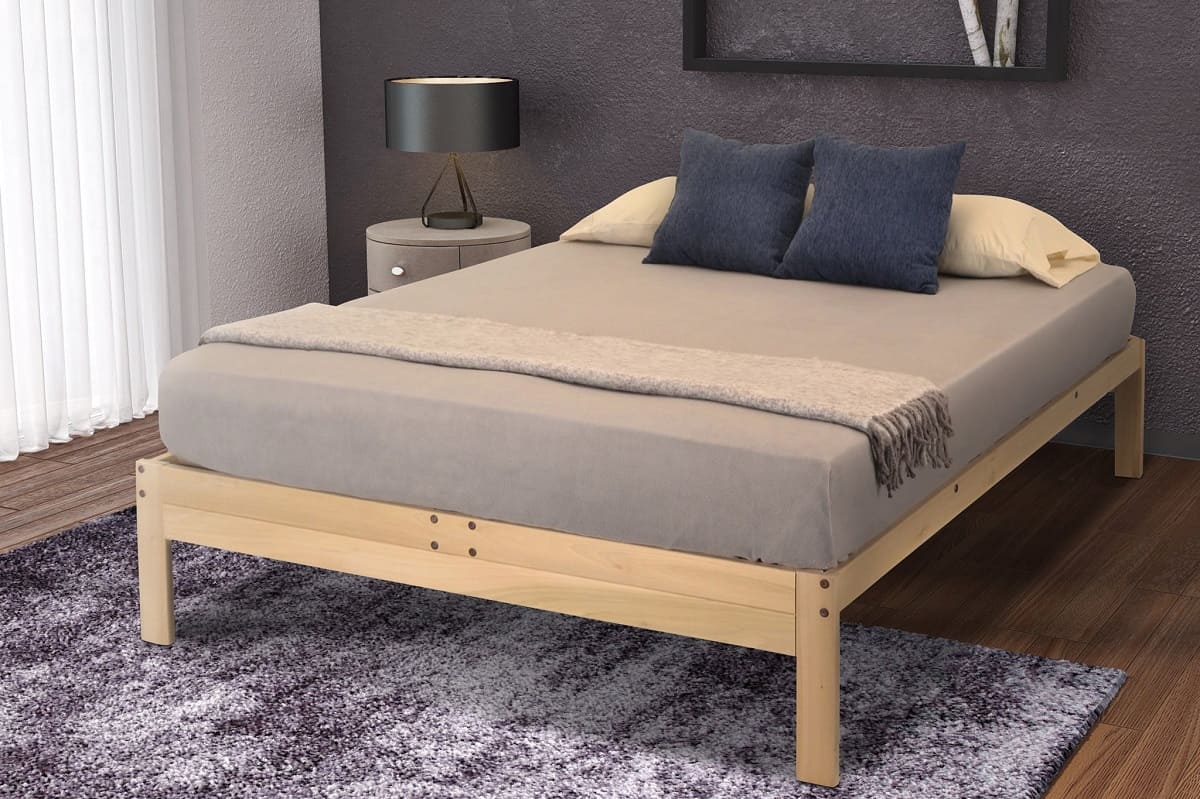

Bedroom Furniture
How To Raise A Bed
Modified: February 28, 2024
Discover the best tips and techniques for raising a bed in your bedroom. Explore our wide selection of bedroom furniture and create the ideal sleep environment.
(Many of the links in this article redirect to a specific reviewed product. Your purchase of these products through affiliate links helps to generate commission for Storables.com, at no extra cost. Learn more)
Introduction
Raising a bed may not be a common topic of conversation, but it can have a significant impact on the overall comfort and aesthetics of your bedroom. Whether you want to create more under-bed storage space, improve airflow, or simply achieve a higher sleeping position, there are various methods you can use to raise your bed to your desired height.
In this article, we will explore different techniques for raising a bed, ranging from bed risers and frame extensions to furniture sliders and adjustable bed legs. We will discuss the advantages and limitations of each method, helping you make an informed decision based on your specific needs and preferences.
So, let’s dive in and discover the various ways to raise a bed and transform your bedroom into a more functional and comfortable space.
Key Takeaways:
- Elevate your bed for extra storage, improved airflow, and enhanced aesthetics. Choose from methods like bed risers, frame extensions, and furniture sliders to suit your specific needs and preferences.
- Consider stability, adjustability, and budget when selecting a method to raise your bed. From cost-effective options like bed blocks to durable choices like metal bed raisers, find the perfect solution for your bedroom.
Read more: How To Raised Garden Bed
Why Raise a Bed
Raising a bed has several benefits that can greatly enhance your sleeping experience and the overall functionality of your bedroom. Here are some common reasons why you might consider raising your bed:
- Additional storage space: One of the main reasons people raise their beds is to create extra storage space underneath. By lifting the bed a few inches higher, you can utilize the area below for storing items like suitcases, seasonal clothing, or bins of belongings.
- Improved airflow: Raising the bed can facilitate better airflow, particularly if you have a mattress that requires proper ventilation. This can help regulate temperature, reduce the accumulation of dust mites, and enhance overall sleep quality.
- Access for cleaning: Cleaning under a low bed can be a challenging task. Raising the bed makes it easier to access and clean the space underneath, ensuring a cleaner and more hygienic sleeping environment.
- Alleviating acid reflux or respiratory issues: For those who suffer from acid reflux or respiratory problems, elevating the head of the bed can provide relief by preventing gastric acid from flowing back into the esophagus and improving breathing.
- Enhanced aesthetics: Raising the bed can give your bedroom a more elevated and sophisticated look. It can create a sense of grandeur and make the bed a focal point in the room.
Ultimately, the decision to raise your bed depends on your personal preferences and the specific advantages you hope to gain. Now that we understand the benefits of raising a bed, let’s explore the different methods you can use to achieve your desired height.
Different Methods to Raise a Bed
There are various methods available to raise a bed, each with its own advantages and considerations. Let’s take a look at some of the most common methods:
- Using Bed Risers: Bed risers are sturdy platforms placed under each bed leg to elevate the height. They are typically made of heavy-duty plastic or metal and come in different heights. Bed risers are an affordable and easy solution to raise the bed without any major modifications to the existing bed frame.
- Using Bed Frame Extensions: Bed frame extensions are additional sections that can be attached to the original bed frame to increase its height. These extensions are usually made of metal or wood and provide a seamless transition between the original frame and the added height. Bed frame extensions provide a stable and secure foundation for your mattress.
- Using Bed Lifts: Bed lifts are small platforms that replace the existing bed frame feet or legs. They come in various designs, such as adjustable or fixed heights. Bed lifts offer a sturdy and durable solution to raise the bed, and some models even feature built-in storage compartments.
- Using Bed Blocks: Bed blocks are solid wooden or plastic blocks placed strategically under each bed leg to raise the height. They offer a simple and cost-effective method to increase the bed’s elevation. However, it’s essential to ensure that the blocks are stable and secure to prevent any accidents.
- Using Furniture Sliders: Furniture sliders are usually used to move heavy furniture with ease. However, they can also be utilized to raise a bed temporarily. Simply place the sliders under each bed leg and adjust the height as needed. While this method may not offer a permanent solution, it’s a convenient option for quick adjustments.
- Using Wooden Blocks or Bricks: If you’re looking for a budget-friendly alternative, wooden blocks or bricks can be used to raise the bed. Simply stack them under each bed leg, ensuring they are stable and secure. However, it’s essential to note that this method may not provide as much stability as other options.
- Using Adjustable Bed Legs: Adjustable bed legs are hardware accessories that can be attached to the existing bed frame. They allow you to modify the height of the bed according to your preference. Adjustable bed legs can provide flexibility and cater to individual comfort needs.
- Using a Plywood Base: A plywood base involves placing a large piece of plywood directly on the bed frame slats or on top of the box spring to add height. This method offers a stable foundation and can be customized to achieve the desired elevation.
- Using Metal Bed Raisers: Metal bed raisers are metal platforms that replace the existing bed frame feet or legs. They typically come in adjustable heights and provide a sturdy and durable solution to raise the bed. Some models even include caster wheels for added mobility.
- Using Bed Wedges: Bed wedges are triangular-shaped pillows or foam blocks placed under the mattress to raise the head or the foot of the bed. They are commonly used to alleviate medical conditions like acid reflux or snoring. Bed wedges offer a gradual elevation and can be adjusted to the desired angle.
Each method offers its own set of advantages, so it’s important to consider factors such as stability, adjustability, budget, and aesthetic preferences when deciding which option is best for you. Now, let’s delve deeper into each method and explore how to implement them properly.
Option 1: Using Bed Risers
Bed risers are an excellent option for raising the height of your bed without making any major modifications to the bed frame. These sturdy platforms are usually made of heavy-duty plastic or metal and come in various heights to accommodate different preferences. Here’s how you can use bed risers:
- Select the right bed risers: Determine the desired height increase for your bed and choose bed risers that provide that specific elevation. Make sure to check the weight capacity of the risers to ensure they can support your bed and mattress.
- Clean the area: Before placing the bed risers, thoroughly clean the floor underneath the bed and remove any debris or items that may interfere with the stability of the risers.
- Position the bed risers: One by one, place the bed risers under each bed leg. Ensure that the risers are aligned with the legs and centered for optimal stability.
- Secure the bed legs: Once the bed risers are in place, carefully place each bed leg onto the risers and ensure a snug fit. Gently press down to ensure the legs are securely seated on the risers.
- Check stability: After you have raised the bed using the risers, test the stability by gently rocking the bed from side to side. Make any necessary adjustments to ensure that the bed is secure and level.
- Ensure safety: It’s important to ensure that the bed risers are properly installed and provide a stable foundation. Regularly check the risers to ensure they remain in place and haven’t shifted or become loose over time.
Bed risers are a cost-effective and straightforward way to raise your bed to a desired height. They can provide additional space for storage and improve under-bed airflow. However, it’s crucial to choose high-quality bed risers that can support the weight of your bed and mattress. Additionally, be mindful of the height increase, as it may impact the overall stability of the bed and accessibility for getting in and out of bed.
Now that you know how to use bed risers, let’s explore another method to raise a bed: using bed frame extensions.
Option 2: Using Bed Frame Extensions
If you prefer a more seamless and permanent solution for raising your bed, using bed frame extensions can be a great choice. Bed frame extensions are additional sections that can be attached to your existing bed frame, providing increased height and stability. Here’s how you can use bed frame extensions:
- Measure and choose the right extension: Measure the width and length of your bed frame to ensure that you select the appropriate bed frame extensions. Extensions are typically available in various sizes to fit different bed frames.
- Prepare the bed frame: Before attaching the bed frame extensions, remove the mattress and any bedding. Make sure the bed frame is clean and free from any debris or obstructions.
- Attach the bed frame extensions: Position the bed frame extensions at the head and foot sides of the bed frame. Align the extension with the existing bed frame and secure them in place using screws or bolts provided with the extension kit.
- Tighten the connections: Ensure that all screws or bolts are securely tightened to provide a stable and secure connection between the bed frame and extensions. Check for any wobbling or instability and make necessary adjustments.
- Perform a stability test: Once the bed frame extensions are properly installed, gently rock the bed to ensure it is stable and doesn’t shift. Test all sides and corners to make sure the bed frame and extensions are securely connected.
- Reassemble the bed: Once you are satisfied with the stability, reassemble the bed by placing the mattress and bedding back onto the bed frame. Ensure everything is properly aligned and adjusted.
Using bed frame extensions offers a seamless and sturdy solution to raise your bed to the desired height. It provides stability and ensures a secure foundation for your mattress. However, it’s important to choose bed frame extensions that are compatible with your specific bed frame and made of high-quality materials to support the added height.
Now that you know how to use bed frame extensions, let’s explore another method to raise a bed: using bed lifts.
Read more: Why A Raised Garden Bed
Option 3: Using Bed Lifts
When it comes to raising your bed with ease and convenience, bed lifts are a popular choice. Bed lifts are small platforms that replace the existing bed frame feet or legs, allowing you to increase the height of your bed. Here’s how you can use bed lifts:
- Select the right bed lifts: Choose bed lifts that are suitable for your bed frame and compatible with the weight and size of your bed. Look for bed lift options that offer adjustable heights to cater to your desired elevation.
- Prepare the bed frame: Remove any bedding or mattress from the bed frame to ensure easy access to the bed legs.
- Remove the existing bed legs: Unscrew or detach the existing bed legs from the bed frame. Keep the screws or attachments in a safe place in case you need to use them later.
- Attach the bed lifts: Place one bed lift at each corner of the bed frame, aligning them with the existing holes or slots. Ensure that the bed lifts are securely attached to the bed frame, using the screws or attachments provided with the bed lift kit.
- Tighten the connections: Double-check that all the screws or attachments are properly tightened to ensure the bed lifts are securely connected to the bed frame. This will ensure stability and prevent any wobbling or shifting of the bed.
- Perform a stability test: Once the bed lifts are securely attached, gently rock the bed to test its stability. Ensure there is no movement or instability. If needed, make any necessary adjustments to enhance stability.
- Reassemble the bed: After conducting the stability test, you can reassemble the bed by placing the mattress and bedding back onto the raised bed frame. Adjust the bedding and ensure everything is properly aligned.
Bed lifts offer a convenient and adjustable solution for raising your bed to the desired height. They provide a stable and durable base for your bed and can often accommodate additional weight and pressure. However, it is crucial to choose bed lifts that are suitable for your bed frame and can safely support the weight of your bed and mattress.
Now that you understand how to use bed lifts, let’s explore another method to raise a bed: using bed blocks.
Option 4: Using Bed Blocks
If you’re looking for a simple and budget-friendly method to raise your bed, using bed blocks is a practical solution. Bed blocks are solid wooden or plastic blocks that can be strategically placed under each bed leg to elevate the height. Here’s how you can use bed blocks:
- Choose the right bed blocks: Select bed blocks that are sturdy and durable enough to support the weight of your bed and mattress. Make sure they are of the appropriate size and height to achieve your desired elevation.
- Prepare the bed frame: Clear the area around the bed frame and remove any bedding or mattress to have easy access to the bed legs.
- Position the bed blocks: Place one bed block under each bed leg, ensuring they are centered and aligned for optimal stability. You can experiment with different heights by using multiple bed blocks or stacking them on top of each other.
- Check stability: Gently press down on the bed to ensure that the bed blocks are secure and the bed legs are firmly supported. If there is any wobbling or instability, adjust the placement of the bed blocks until the bed feels stable.
- Reassemble the bed: Once you are satisfied with the stability, reassemble the bed by placing the mattress and bedding back onto the raised bed frame. Make sure everything is properly aligned and adjusted.
Using bed blocks is a cost-effective way to raise your bed to a desired height. It allows for easy adjustment and customization, as you can add or remove blocks to achieve the desired elevation. However, it’s important to ensure that the bed blocks are stable and adequately support the weight of your bed and mattress.
Now that you know how to use bed blocks, let’s explore another method to raise a bed: using furniture sliders.
Consider using bed risers to raise the height of your bed. These are small, sturdy blocks that can be placed under each bedpost to lift the bed to your desired height. This can create extra storage space underneath the bed and make it easier to get in and out of bed.
Option 5: Using Furniture Sliders
If you’re looking for a temporary and versatile solution to raise your bed, using furniture sliders can be a convenient option. While furniture sliders are primarily used to move heavy furniture, they can also be utilized to give your bed a temporary lift. Here’s how you can use furniture sliders to raise your bed:
- Select the right furniture sliders: Choose furniture sliders that are designed for heavy-duty use and can support the weight of your bed. Look for sliders with a smooth surface and a sturdy construction.
- Prepare the area: Clear the floor space around the bed and remove any clutter or obstacles that may hinder the movement of the furniture sliders.
- Place the furniture sliders: Position one furniture slider under each bed leg. The smooth surface of the slider should be facing downwards to enable easy gliding. Make sure the sliders are centered and aligned for optimal stability.
- Test the sliding: Gently push or pull the bed to ensure that the sliders are working properly and the bed moves with ease. Adjust the position of the sliders if necessary to achieve a smoother glide.
- Check stability: Once the bed is raised using the furniture sliders, test its stability by gently rocking it from side to side. Ensure that the bed remains stable and doesn’t wobble or shift.
- Reposition the bed: If you need to move the bed to a different location, carefully slide it to the desired spot. Take care to minimize any sudden movements and protect both the floor and the bed frame from damage.
Using furniture sliders to raise your bed offers flexibility and convenience. It allows you to adjust the height easily and move the bed whenever needed. However, keep in mind that furniture sliders may not provide a permanent solution, as they can potentially shift or move over time. It’s essential to regularly check the sliders’ position and stability to ensure the bed remains secure.
Now that you understand how to use furniture sliders, let’s explore another method to raise a bed: using wooden blocks or bricks.
Option 6: Using Wooden Blocks or Bricks
If you’re on a tight budget and seeking a straightforward and customizable method to raise your bed, using wooden blocks or bricks can be a practical solution. Here’s how you can use wooden blocks or bricks to elevate your bed:
- Select the right blocks or bricks: Choose solid wooden blocks or bricks that are sturdy and can support the weight of your bed and mattress. Ensure they are of a size and shape that can provide the desired elevation for your bed.
- Prepare the bed frame: Clear the area around the bed frame and remove any bedding or mattress to have easy access to the bed legs.
- Position the blocks or bricks: Place one block or brick under each bed leg, ensuring they are centered and aligned. Stack multiple blocks or use larger bricks if you desire a higher elevation.
- Check stability: Gently press down on the bed to ensure that the blocks or bricks are securely in place and the bed legs are firmly supported. If there is any wobbling or instability, adjust the position or height of the blocks or bricks until the bed feels stable.
- Reassemble the bed: Once you are satisfied with the stability, reassemble the bed by placing the mattress and bedding back onto the raised bed frame. Make sure everything is properly aligned and adjusted.
Using wooden blocks or bricks to raise your bed offers a cost-effective and customizable solution. You can easily adjust the height by adding or removing blocks or bricks as needed. However, keep in mind that this method may not provide as much stability as other options, and it’s essential to regularly check the blocks or bricks and ensure they remain secure and stable.
Now that you know how to use wooden blocks or bricks, let’s explore another method to raise a bed: using adjustable bed legs.
Read more: What Is A Raised Garden Bed
Option 7: Using Adjustable Bed Legs
If you prefer a flexible and adjustable option for raising your bed, using adjustable bed legs can be an ideal choice. Adjustable bed legs are hardware accessories that can be attached to your existing bed frame, allowing you to modify the height of the bed according to your preference. Here’s how you can use adjustable bed legs:
- Select the right adjustable bed legs: Choose adjustable bed legs that are compatible with your bed frame and capable of supporting the weight of your bed and mattress. Look for legs that offer a wide range of height adjustments to cater to your desired elevation.
- Prepare the bed frame: Clear the area around the bed frame and remove any bedding or mattress for easy access to the bed legs.
- Remove the existing bed legs: Unscrew or detach the existing bed legs from the bed frame. Keep the screws or attachments in a safe place in case you need to use them later.
- Attach the adjustable bed legs: Securely attach the adjustable bed legs to the bed frame, using the screws or attachments provided with the adjustable leg set. Make sure they are aligned properly and evenly distributed across all corners of the bed frame.
- Adjust the height: Utilize the adjustable mechanism or feature of the bed legs to increase or decrease the height of the bed as desired. Follow the instructions provided with the adjustable leg set to ensure proper adjustment.
- Check stability: Once you have set the desired height, test the stability of the bed by gently rocking it from side to side. Make any necessary adjustments to ensure that the bed remains stable and sturdy.
- Reassemble the bed: After conducting the stability test, reassemble the bed by placing the mattress and bedding back onto the raised bed frame. Ensure everything is properly aligned and adjusted.
Using adjustable bed legs offers convenience and flexibility, allowing you to adjust the bed’s height according to your preference. It provides stability and a secure foundation for your mattress. However, it’s essential to choose adjustable bed legs that are compatible with your specific bed frame and made of high-quality materials to support the added height securely.
Now that you know how to use adjustable bed legs, let’s explore another method to raise a bed: using a plywood base.
Option 8: Using a Plywood Base
If you’re looking for a simple and versatile method to raise your bed while providing a stable foundation, using a plywood base can be a practical solution. Here’s how you can use a plywood base to elevate your bed:
- Measure and cut the plywood: Measure the dimensions of your bed frame and cut a piece of plywood to fit on top of the bed frame slats or on the box spring. Make sure the plywood is thick enough to provide stability and support.
- Prepare the bed frame: Remove any bedding or mattress from the bed frame and ensure the bed frame is clean and free from debris.
- Place the plywood base: Position the plywood base on top of the bed frame slats or on the box spring, ensuring it is centered and aligned. The plywood should cover the entire surface area of the bed frame.
- Secure the plywood: Depending on your preference, you can secure the plywood to the bed frame using screws or adhesives. Make sure the plywood is securely fixed to prevent any movement or shifting.
- Test stability: Gently press down on the bed to ensure the plywood base is properly secured and provides a stable foundation. Check for any wobbling or instability, and make any necessary adjustments to enhance stability.
- Reassemble the bed: Once you are satisfied with the stability, reassemble the bed by placing the mattress and bedding back onto the raised bed frame. Ensure everything is properly aligned and adjusted.
Using a plywood base offers a cost-effective and customizable solution to raise your bed to the desired height. It provides a stable and sturdy foundation for your mattress while allowing for easy adjustment and customization. However, it’s crucial to choose a plywood thickness that can support the weight of your bed and ensure proper stability.
Now that you know how to use a plywood base, let’s explore another method to raise a bed: using metal bed raisers.
Option 9: Using Metal Bed Raisers
If you’re looking for a durable and reliable solution to raise your bed, using metal bed raisers can be an excellent choice. Metal bed raisers are platforms that replace the existing bed frame feet or legs, providing increased height and stability. Here’s how you can use metal bed raisers:
- Select the right metal bed raisers: Choose metal bed raisers that are compatible with your bed frame and can support the weight of your bed and mattress. Look for raisers that offer adjustable heights and are made of sturdy metal for maximum durability.
- Prepare the bed frame: Clear the area around the bed frame and remove any bedding or mattress for easy access to the bed legs.
- Remove the existing bed legs: Unscrew or detach the existing bed legs from the bed frame. Keep the screws or attachments in a safe place in case you need to use them later.
- Attach the metal bed raisers: Securely attach the metal bed raisers to the bed frame, using the screws or attachments provided with the raiser set. Make sure they are aligned properly and evenly distributed across all corners of the bed frame.
- Adjust the height: Utilize the adjustable mechanism or feature of the metal bed raisers to increase or decrease the height of the bed as desired. Follow the instructions provided with the raiser set to ensure proper adjustment.
- Check stability: Once you have set the desired height, test the stability of the bed by gently rocking it from side to side. Ensure that the bed remains stable and doesn’t wobble or shift.
- Reassemble the bed: After conducting the stability test, reassemble the bed by placing the mattress and bedding back onto the raised bed frame. Ensure everything is properly aligned and adjusted.
Using metal bed raisers offers a sturdy and long-lasting solution to raise your bed to the desired height. They provide enhanced stability and a secure foundation for your mattress. However, it’s important to choose metal bed raisers that are compatible with your specific bed frame and can support the added height securely.
Now that you know how to use metal bed raisers, let’s explore another method to raise a bed: using bed wedges.
Option 10: Using Bed Wedges
If you’re looking to raise specific areas of your bed, such as the head or foot, to provide relief from certain medical conditions or improve sleep quality, using bed wedges can be an effective solution. Bed wedges are triangular-shaped pillows or foam blocks that can be placed under the mattress to create elevation in targeted areas. Here’s how you can use bed wedges:
- Select the right bed wedges: Choose bed wedges that are designed to provide the desired elevation and support for the specific areas you wish to raise. Select wedges made from high-quality materials that offer the comfort and firmness level you prefer.
- Prepare the bed: Remove any bedding or mattress from the bed frame to access the area where you want to place the bed wedges.
- Place the bed wedges: Position the bed wedges under the mattress in the desired location. If you want to raise the head, place the wedge towards the headboard. For elevating the foot, position the wedge towards the foot of the bed.
- Adjust the angle: Depending on your needs, you can adjust the angle of the bed wedges to achieve your desired elevation. Experiment with different angles until you find the most comfortable position.
- Check comfort and stability: Lie down on the bed to ensure that the bed wedges provide the desired support and comfort. Make any necessary adjustments, such as adding or removing wedges, until you find the optimal setup.
- Reassemble the bed: Once you are satisfied with the configuration, reassemble the bed by placing the mattress and bedding back onto the bed frame. Ensure everything is properly aligned and adjusted.
Using bed wedges offers a customizable solution to raise specific areas of the bed for optimal comfort and support. They can be particularly beneficial for individuals with conditions such as acid reflux, snoring, or respiratory issues. However, it’s important to choose wedges that are of high quality and provide the appropriate level of support for your specific needs.
Now that you know how to use bed wedges, you have explored various options to raise your bed. Choose the method that best suits your preferences and requirements to enhance your sleeping experience and the overall functionality of your bedroom.
Read more: How To Prepare A Raised Garden Bed
Conclusion
Raising a bed can significantly impact the comfort, functionality, and aesthetics of your bedroom. Whether you’re seeking additional under-bed storage space, better airflow, or a higher sleeping position, there are various methods available to raise your bed to your desired height.
We explored ten different methods to raise a bed, each with its own advantages and considerations. From using bed risers and frame extensions to furniture sliders and adjustable bed legs, you have a range of options to choose from based on your specific needs and preferences.
Bed risers are a cost-effective and straightforward solution that provides additional storage space and improved under-bed airflow. On the other hand, using bed frame extensions offers a seamless and permanent solution, ensuring stability and a secure foundation for your mattress.
Bed lifts, bed blocks, and furniture sliders provide flexibility and temporary options for raising your bed, allowing for adjustments and ease of use. Wooden blocks or bricks offer a budget-friendly choice, while adjustable bed legs provide flexibility and adjustability. A plywood base is a versatile and customizable solution, and metal bed raisers offer durability and stability.
Lastly, bed wedges allow for targeted elevation to provide relief from certain medical conditions or improve sleep quality.
When choosing a method to raise your bed, consider factors such as stability, adjustability, budget, and aesthetic preferences. Ensure that the chosen method is compatible with your bed frame and capable of supporting the weight of your mattress.
By raising your bed using one of these methods, you can enhance your sleeping experience, create extra storage space, improve under-bed airflow, and achieve the desired aesthetic appeal in your bedroom.
Now that you’re equipped with the knowledge of various bed-raising methods, it’s time to transform your bedroom into a more functional and comfortable space that suits your needs and preferences.
Frequently Asked Questions about How To Raise A Bed
Was this page helpful?
At Storables.com, we guarantee accurate and reliable information. Our content, validated by Expert Board Contributors, is crafted following stringent Editorial Policies. We're committed to providing you with well-researched, expert-backed insights for all your informational needs.

